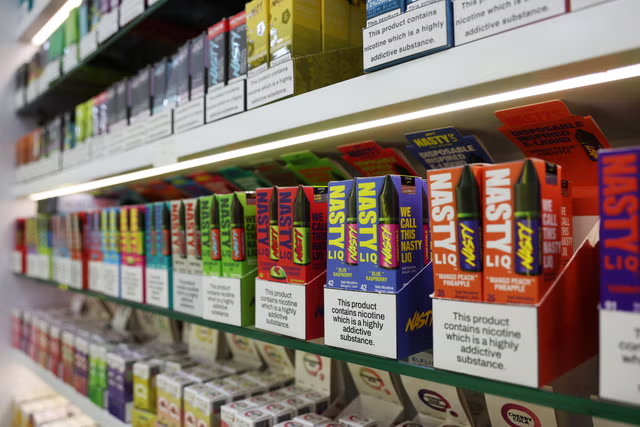As the moon's shadow passes in front of the sun during the solar eclipse on April 8, NASA plans to chase the phenomenon with jet planes.
Three research teams plan to place scientific instruments aboard NASA's WB-57 jet planes to study the secrets of space weather from 50,000 feet in the air.
Two of the teams plan to image the outer atmosphere of the sun, known as the corona, while the third hopes to measure the ionosphere of the Earth.
A total solar eclipse, like the one occurring on April 8, provides a perfect opportunity to study the sun's corona, as the moon's shadow blocks out the rest of the glaringly bright sun. This allows scientific instruments to pick up a much greater degree of detail.
Among the equipment being used are spectrometers, which are set to measure the temperature and chemical composition of the corona. They are also expected to detect details about what makes up a coronal mass ejection, which are plumes of solar plasma that can trigger geomagnetic storms if they collide with the Earth's atmosphere.
The researchers hope to elucidate how the corona of the sun is heated.
"This light is our best probe short of sticking a thermometer in the corona," Shadia Habbal, a researcher at the University of Hawaii who leads of one of the WB-57 eclipse experiments, said in a statement.
During the 2017 eclipse, which passed southeast from the Pacific Northwest down through South Carolina on August 21, another research team used the WB-57s for the first time to study the corona. This time around, however, the cameras have been improved, NASA said, to measure more wavelengths. The researchers hope that this will reveal new information about the middle and lower corona, as well as a bizarre dust ring that circles the sun.
"There isn't a lot of data of the Sun at some of the wavelengths we'll be studying," Amir Caspi, a researcher at the Southwest Research Institute in Boulder, Colorado, said in the statement. "We don't know what we'll find, so it's extra exciting to be making these measurements."
The blocking of the sun's light would also allow scientists to study the effects of the moon's shadow on the ionosphere's charge using an instrument called an ionosonde— which sends out high-frequency radio signals and measures how much is reflected back, a key indicator of how charged the ionosphere is.
"The eclipse basically serves as a controlled experiment," said Bharat Kunduri, the leader of the ionosphere project and a research assistant professor at Virginia Tech, said in the statement. "It gives us an opportunity to understand how changes in solar radiation can impact the ionosphere, which can in turn impact some of these technologies like radar and GPS that we rely on in our daily lives."
With the jets far above any cloud cover, they should have a clear view of the eclipse. They would also be above much of the atmosphere itself, allowing for more precise measurements to be taken. Additionally, the jets allow the scientists to extend the length of the totality by up to 25 percent, giving them over 6 minutes to take measurements.
"The length of totality can vary based on the moon's distance away from us and the path of the eclipse, but generally, totality tends to last for between two and four minutes [on the ground]," Jake Foster, a public astronomy officer at the Royal Observatory Greenwich in the U.K., told Newsweek.
The extension of the totality is possible because of the speed of the jets, which can travel at up to 460 mph, NASA said in the statement, allowing them to chase the path of the eclipse's totality.
"By extending the duration of totality, we're increasing the duration of how much data we can acquire," Habbal said.
Do you have a tip on a science story that Newsweek should be covering? Do you have a question about the solar eclipse? Let us know via science@newsweek.com.
Disclaimer: The copyright of this article belongs to the original author. Reposting this article is solely for the purpose of information dissemination and does not constitute any investment advice. If there is any infringement, please contact us immediately. We will make corrections or deletions as necessary. Thank you.



